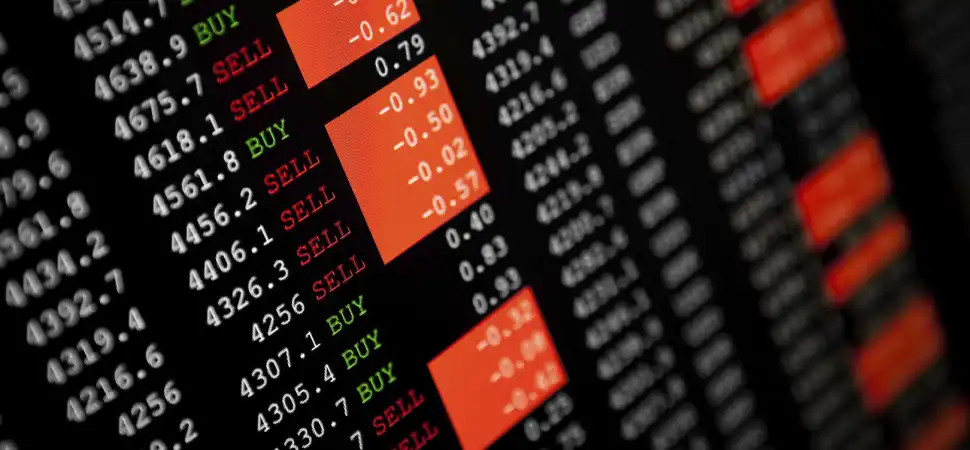01.08.2024
Евгений Лебедев
236

Margin call is an important concept for everyone who trades on the market using leverage. When the balance on the trading account falls below the required level, the broker requires the trader to either replenish the account or close a part of positions. This is a protective measure designed to prevent excessive losses. Margin Call allows you to effectively manage your risks, avoid unexpected losses and maintain control over your investments.
What is a margin call?
A margin call is an event that occurs when a trader is trading on margin and the balance (equity minus unrealised losses) in his trading account falls below the level required by the broker to maintain open positions. This means that the losses on open positions (unrealised losses) are such that the trader must either add additional funds to meet margin requirements or close certain positions to release margin. If the trader is unable to meet the margin requirement, the broker may automatically close positions to prevent further losses.
Note that some brokers call the action to close positions a ‘Margin Call’, while other brokers will only have this as a notification and the action to automatically close positions will be called a ‘Stop Out’. The terms and the way this trading event is managed differs from country to country, so be careful if you are trading futures with a US broker.
Depending on the broker, a margin call may be an alert inviting you to deposit more funds into your account to keep unprofitable positions open, or the broker may automatically close the most unprofitable positions, or automatically put a hedge on them while you make a decision. Typically, a margin call is made after several notices alerting you to an excessive load on your account. You should consult with your broker beforehand, as each broker has a different margin call policy.
How is the margin call calculated?
It depends on the specifics of the chosen financial product and the rules of each broker. Therefore, traders should check in advance with their broker about the margin rules and calculation methods for the financial product they want to trade, but let's look at a general example. Suppose a trader takes a position in a leveraged financial product. Example of a margin call calculation:
- The trader buys 5 contracts on the product, each worth 100 units at $110 per unit (so the total is $55,000). In this example, the trader has $28,000 in his account;
- The initial margin required for each contract is $700, i.e. $3,500 for 5 contracts;
- The maintenance margin per contract is set at $610, which is $3,050 for 5 contracts;
- If the contract value falls to $60 per unit (-$50 loss per contract), the total value of the position is $30,000 (5 contracts x 100 units x $60). Thus, the trader has an unrealised loss of $25,000 ($55,000 - $30,000);
- The trader is in a margin call position because he no longer has enough money to keep his positions open. The unrealised loss of $25,000 + $3,050 = $28,050, which is more than his original deposit of $28,000. Therefore, the trader must make an additional security deposit or adjust his position.
It is important to note that this is just an example and that the exact method of calculation may change depending on market conditions, clearing house rules and broker policies. To understand how margin requirements are calculated for your trading account, you should familiarise yourself with your broker's specific terms and conditions.

Difference between initial margin and maintenance margin
Initial margin is the amount a trader must deposit to open a leveraged position. It represents a percentage of the total position size and is used as a guarantee to cover potential losses that may occur as a result of market movements. Once a trader has used up all of his initial margin, he can no longer open new trades.
Maintenance margin is the minimum balance that a trader must maintain in his account to keep a position open. If the account balance falls below this level due to losses on open positions, a margin call is triggered, forcing the trader to add additional funds or close positions to restore the maintenance margin. Thus, initial margin is the amount needed to open a trade and maintenance margin is the amount needed to continue trading.
How to avoid a margin call?
A margin call can have disastrous consequences for your capital and trading performance, as positions are often closed at the wrong time. A margin call can force you out of positions at the worst possible time, even if the market is in a support zone and about to reverse. And don't forget that if your broker closes all your positions during a margin call, he won't be able to distinguish good positions from bad ones and may close trades that you would be better off keeping. Therefore, it is very important to know how to effectively manage your margin levels.
Avoiding a margin call requires a careful strategy and constant monitoring of your portfolio. This may seem obvious, but it is worth remembering that the capital in your account should be sufficient to cover the margin requirements of open positions. It is advisable not to use all available capital for margin so that you have a margin of safety.
Using stop losses for unsuccessful positions can limit your losses by automatically closing the position when the market reaches a certain unfavourable price so that you do not accumulate losses that could lead to a margin call. Finally, moderate use of leverage is a trader's best weapon to prevent a margin call scenario. If you need to use a little more leverage, do it on different stocks (e.g. CAC 40 and oil) to have more exposure.
Conclusion
As we explained earlier, encountering margin calls can have serious consequences on your funds and trading results. Positions are often closed at the wrong time. For example, a margin call can force you to liquidate positions in unfavourable conditions. It is also important to remember that if your broker closes all of your positions in response to a margin call, they will not be able to distinguish between potentially profitable and unprofitable positions. As a result, profitable positions may be closed when it would have been preferable to leave them open.
Thus, the risks associated with margin calls include not only the possibility of losing a significant portion of your capital, but also the possibility of missing out on favourable market opportunities. It can also lead to a chain reaction of closing positions, which can increase losses and reduce the possibility of recovering from subsequent market movements. It is therefore very important to actively manage your margin to avoid such situations.

/ Reviews